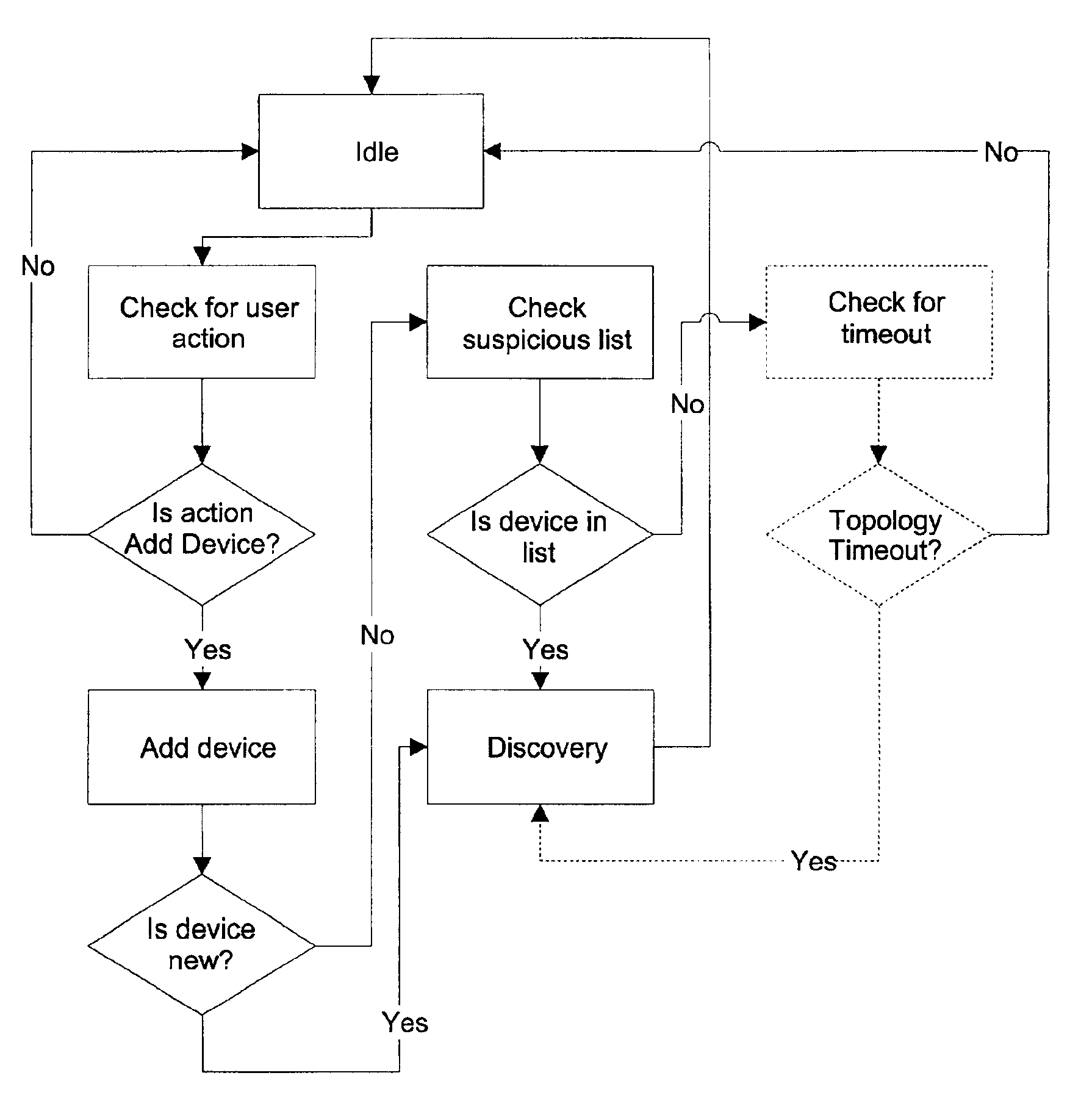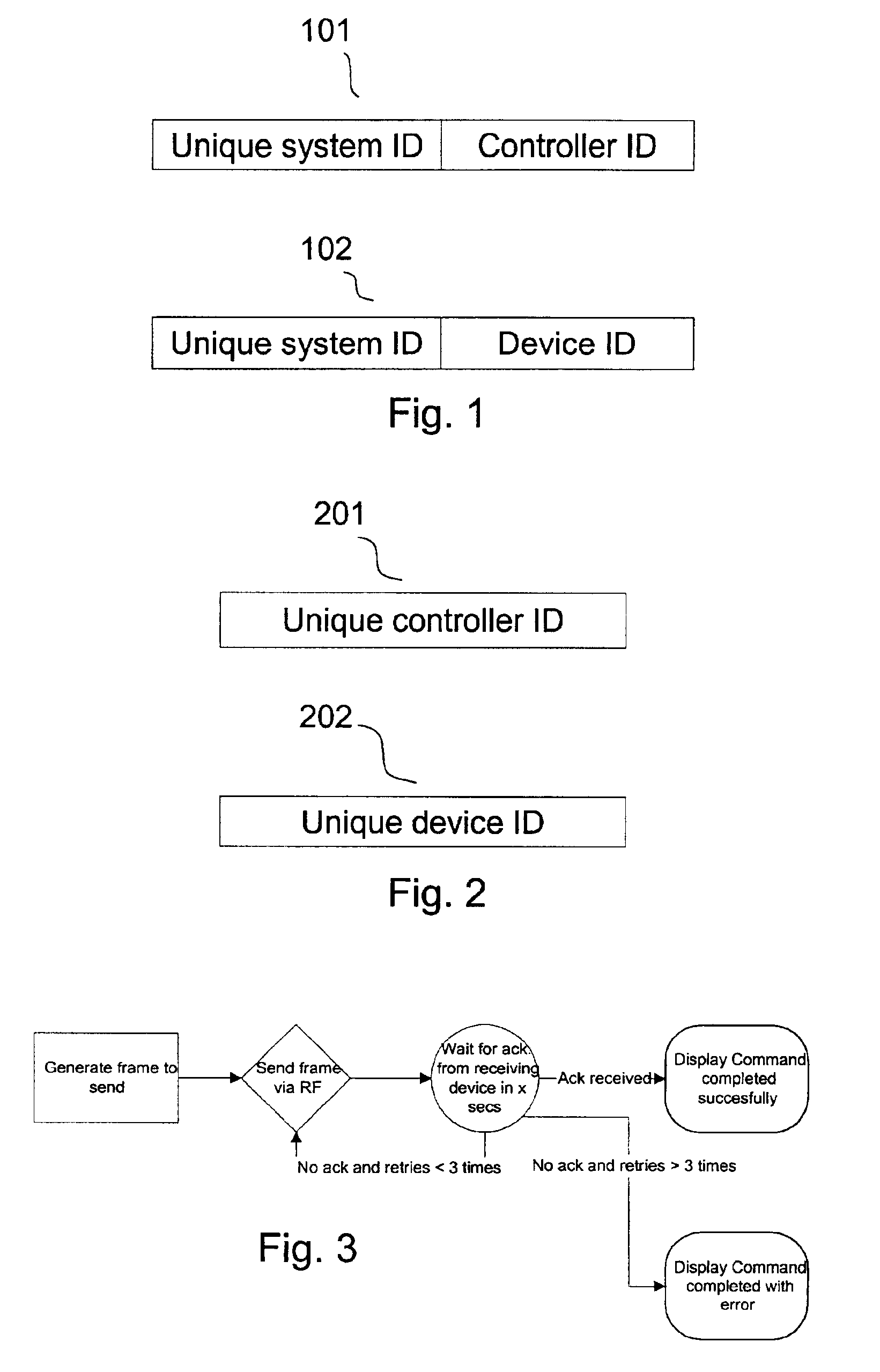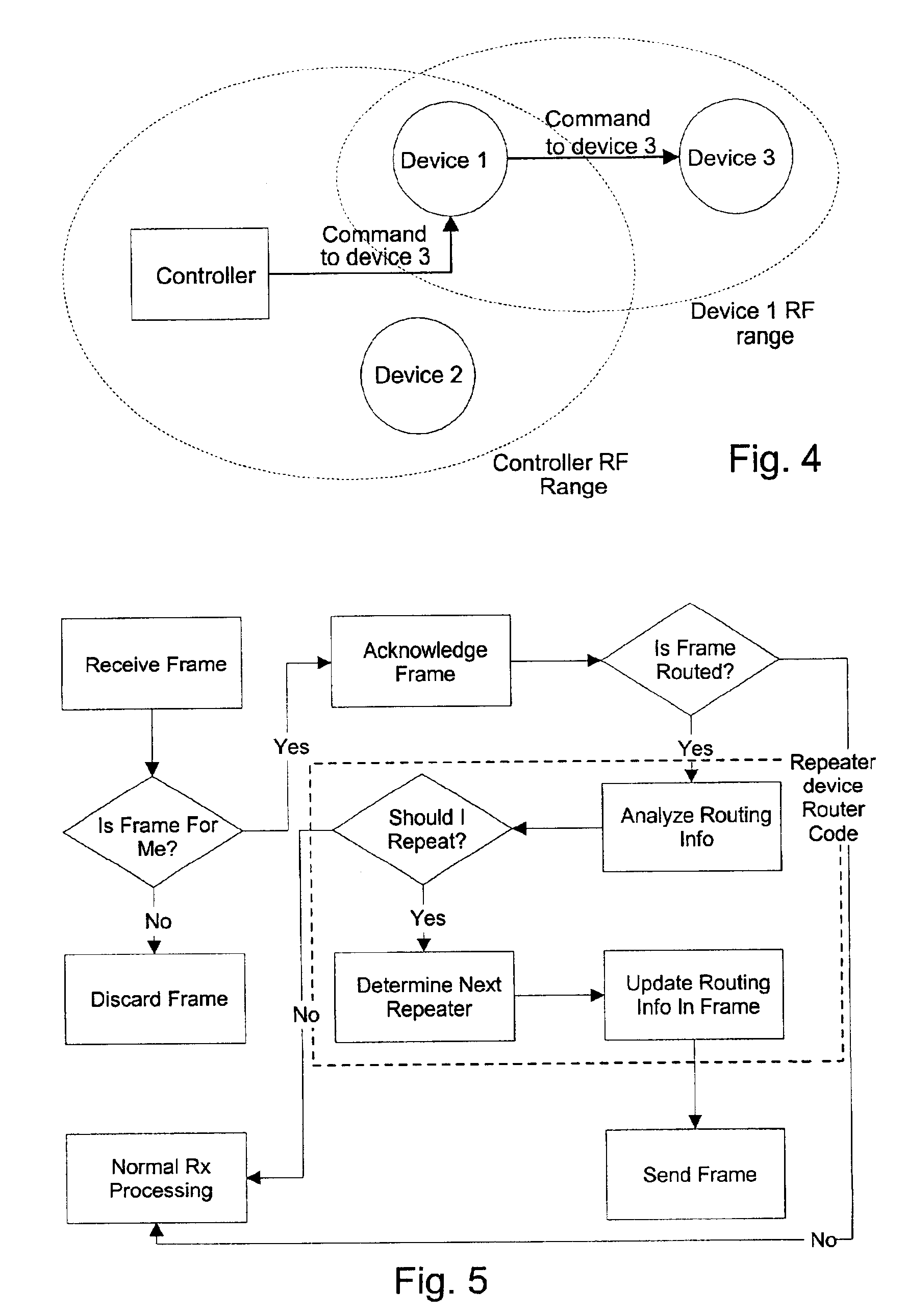System and a method for building routing tables and for routing signals in an automation system
a routing table and automation system technology, applied in the field of wireless automation systems, can solve the problems of reducing the quality of the system, low data capacity, large amount of radio frequency interference, etc., and achieve the effects of reducing the price, high quality, and low cos
- Summary
- Abstract
- Description
- Claims
- Application Information
AI Technical Summary
Benefits of technology
Problems solved by technology
Method used
Image
Examples
first embodiment
The communication protocol of the first embodiment has a general format for the frames carrying the instructions and information between the devices of the system.
The frame format according to the first embodiment can be described as:
TABLE 11514131211109876543210Home ID (Low word)Home ID (High word)VersionDirTypeSource IDCommandLength (bytes, ex. Checksum)Data byte 0Command valueChecksumData byte n
Wherein:The numbers 0 through 15 represent a bit-scale giving the order and sizes of each part of the frame. The order in which the parts appear are not restrictive and different orders can be used.Home ID (32 bit): The Home ID of the system in which this frame should be executed / received.Source ID (8-bit): The identifier (second part of the two-part identifier) of the transmitting controller or device.Version (3 bit): Protocol / frame format version. This gives the freedom to change the frame format according to an update of the software protocol or other infrastructure enhancements.Dir. (1...
second embodiment
The following description of the Power & Lighting control system mainly deals with those aspects not comprised in the high-level description of general parts of the conceptual, scaleable system given in the description of the first preferred embodiment of the automation system. However, details and features described only in relation to the second embodiment are also valid with respect to the first preferred embodiment.
The Power & Lighting control system consists of the following elements.
Controllers
In the Power & Lighting embodiment, the controller is a mobile control panel such as a remote control, so that the use or programming of the system is not restricted to certain locations. Controllers have a display such as an LCD (Liquid Crystal Display) display. The controllers can optionally interface with a computer; moreover, a computer may also act as a controller in the system. The initial implementation and often also later setting of a device is carried out in the vicinity of the...
PUM
 Login to View More
Login to View More Abstract
Description
Claims
Application Information
 Login to View More
Login to View More - R&D
- Intellectual Property
- Life Sciences
- Materials
- Tech Scout
- Unparalleled Data Quality
- Higher Quality Content
- 60% Fewer Hallucinations
Browse by: Latest US Patents, China's latest patents, Technical Efficacy Thesaurus, Application Domain, Technology Topic, Popular Technical Reports.
© 2025 PatSnap. All rights reserved.Legal|Privacy policy|Modern Slavery Act Transparency Statement|Sitemap|About US| Contact US: help@patsnap.com



